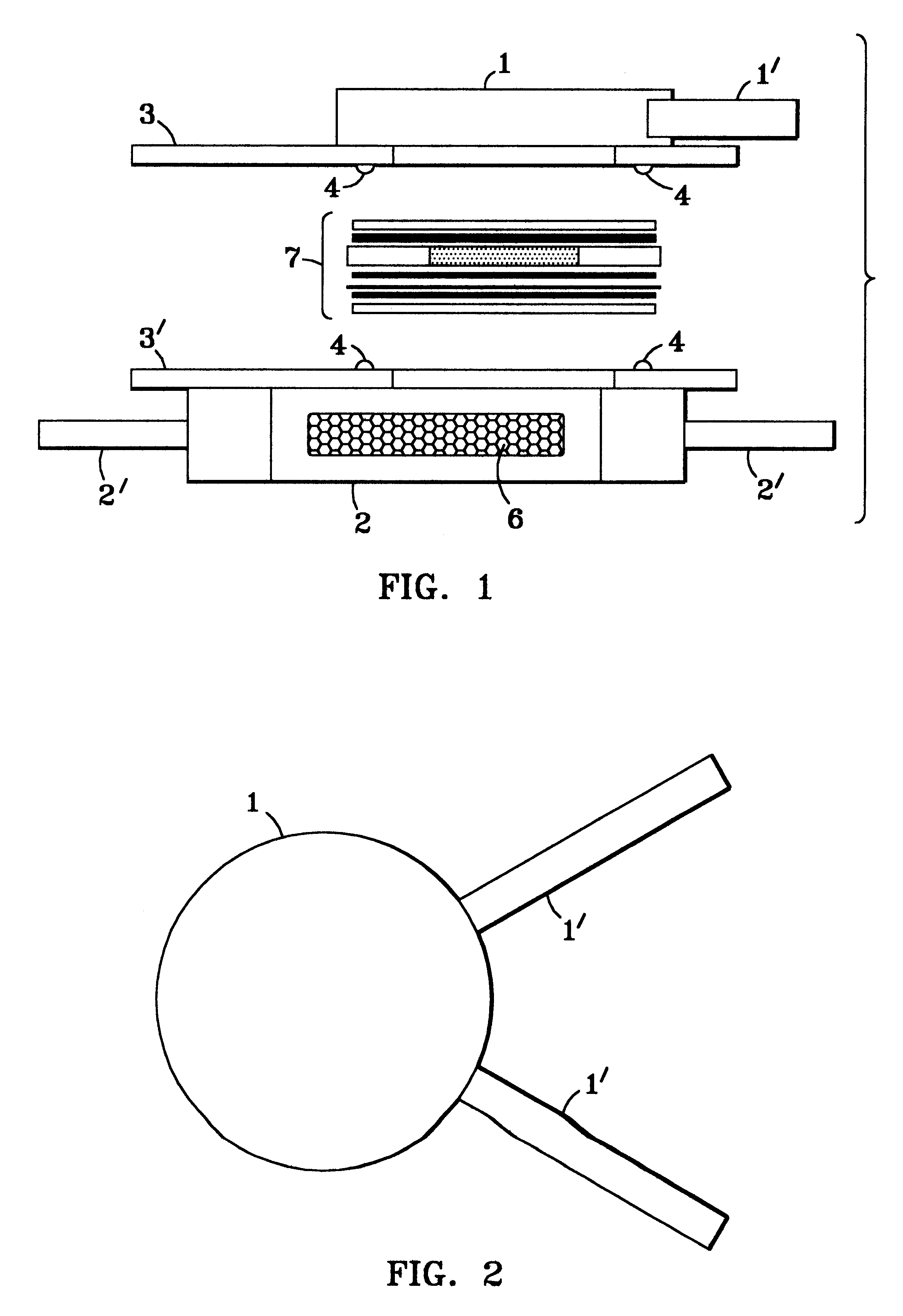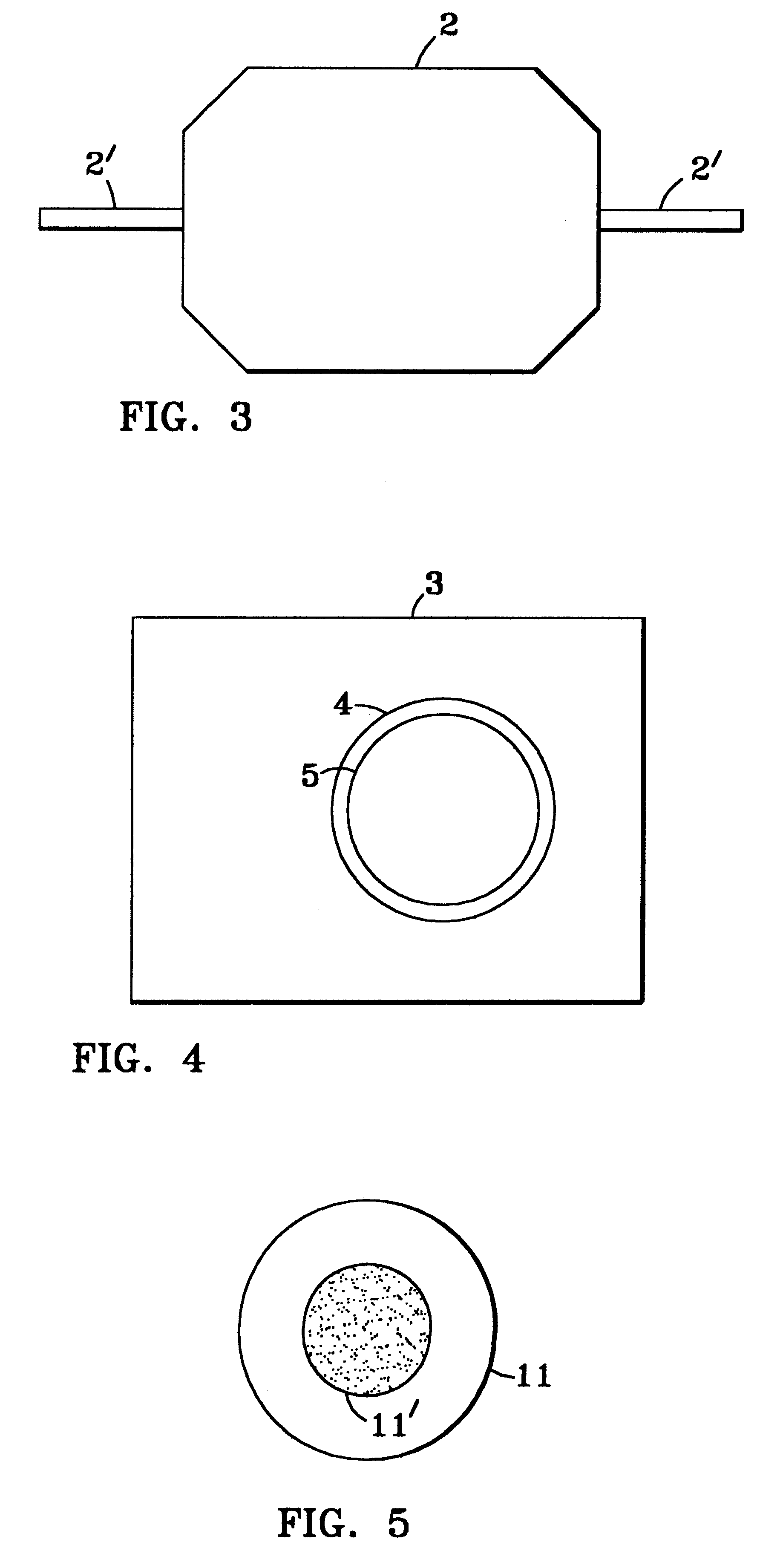Method of linking membrane purification of hydrogen to its generation by steam reforming of a methanol-like fuel
- Summary
- Abstract
- Description
- Claims
- Application Information
AI Technical Summary
Benefits of technology
Problems solved by technology
Method used
Image
Examples
example 1
The effect of the need of the before-described turbulence promoter in the technique of the invention, as compared with a system not using the same, will now be demonstrated.
In accordance with FIG. 7, a reforming process is illustrated wherein a liquid methanol / water feed 12, in the ratio of one mole of methanol and 2 mole of water, is fed by pump 13, at the rate of 0.7 cc / min, to a heat-insulated (insulation not shown) pressurized vaporizer 14 at 30-40 psi, measured by gauge 15. The vaporized mixture passes into an insulated reactor (insulation again not shown) containing a catalyst bed 17, which consists of 25 grams of a commercial methanol reforming catalyst, identified by United Catalysts Inc. of Louisville, Ky., comprising copper oxide as the active element mixed with other inorganic oxides. The catalyst bed temperature is kept at 240.degree. C. and is measured at the top of the bed by the thermocouple 19 held constant by electronic controller 18 which powers the heating element...
example 2
As an illustration of the remarkably lower carbon monoxide effect on the palladium / copper membrane compared to the palladium / 25% silver membrane, a mixture of 2% CO, 25% CO.sub.2 and the balance hydrogen was fed at 200.degree. C. to the above-described membrane permeator. With the palladium / silver alloy membrane, the initial Q / Q.degree. value was 0.3 and it dropped to about 0.17 in four and one-half hours. All other things being equal, the initial Q / Q.degree. value for the palladium copper membrane was 0.55 and it was still about 0.52 after four and one-half hours.
While again we do not want to be held to any particular theory, it is plausible to attribute the better resistance to carbon monoxide to the copper constituent of the alloy which catalyzes the shift reaction, equation (2) discussed above, of the adsorbed carbon monoxide with steam.
Comparative tests of the above palladium / silver alloy membrane and a palladium / 7% ruthenium alloy membrane, run for 140 hours at the non-poisoni...
example 3
The effect of combining methanol reforming and hydrogen permeation under turbulent flow and under substantially complete fuel conversion is illustrated as follows.
As depicted in FIG. 8, the glass frits in the membrane assembly 7 above described are replaced by 12 grams of the reforming catalyst 17 in particulate cylindrical form (1 / 4" diameter .times. 1 / 8" height) and the membrane 10 therein is now a one mil thick palladium / 40% (by weight) copper alloy foil. Controller 18 holds the membrane reactor at 290.degree. C., measured by thermocouple 19. The reactants 12, composed of 1.1 mol water and 1 mol methanol, are fed at a liquid flow rate of 0.12 ml / min. by pump 13 to the pressurized vaporizer 14 and thence to the membrane pack 7 in the assembly 20, flowing again longitudinally across the membrane in a turbulent tortuous path 21 across the granular catalyst bed. The reformate pressure, measured at gauge 15, is varied between 60 and 200 psig. The membrane assembly reactor, again heat ...
PUM
| Property | Measurement | Unit |
|---|---|---|
| Fraction | aaaaa | aaaaa |
| Fraction | aaaaa | aaaaa |
| Fraction | aaaaa | aaaaa |
Abstract
Description
Claims
Application Information
 Login to View More
Login to View More - R&D
- Intellectual Property
- Life Sciences
- Materials
- Tech Scout
- Unparalleled Data Quality
- Higher Quality Content
- 60% Fewer Hallucinations
Browse by: Latest US Patents, China's latest patents, Technical Efficacy Thesaurus, Application Domain, Technology Topic, Popular Technical Reports.
© 2025 PatSnap. All rights reserved.Legal|Privacy policy|Modern Slavery Act Transparency Statement|Sitemap|About US| Contact US: help@patsnap.com



